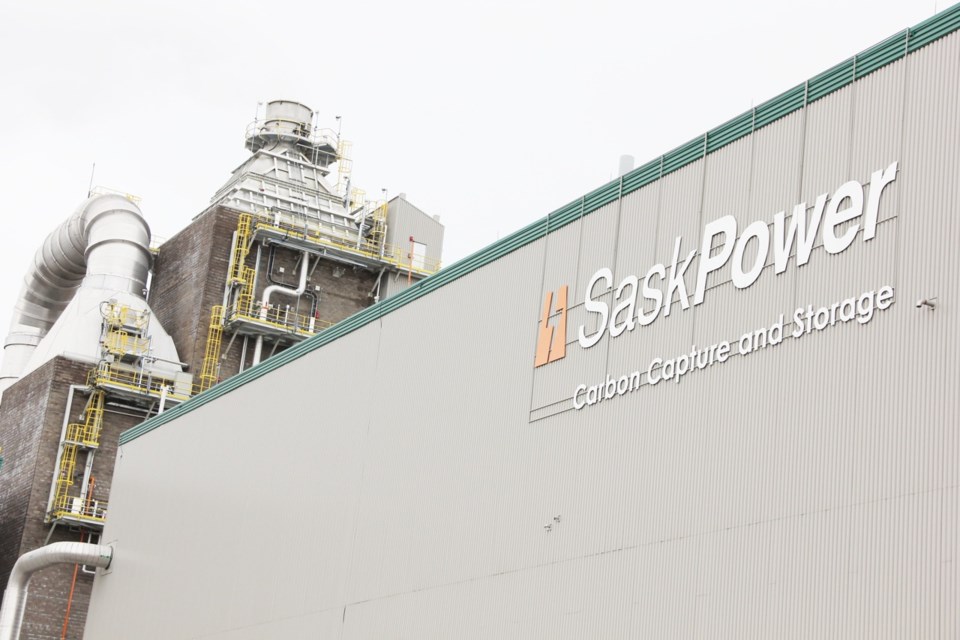REGINA - After a slow start to 2022, the carbon capture and storage facility at SaskPower’s Boundary Dam Power Station had one of its best years yet, and it attained another major milestone at the end of last year.
According to information supplied by SaskPower on Jan. 23, as of the end of 2022, 5,001,707 tonnes of CO2 had been captured and prevented from entering the atmosphere since the facility came online in October 2014.
Total capture for the 2022 calendar year was 749,035 tonnes, and SaskPower says CCS is on track to achieve an 800,000-tonne target for the 2022-23 fiscal year, which ends March 31.
The best year for CCS came in 2016, when 792,809 tonnes of CO2 were captured.
“After recovering from a couple of outages … that occurred in late 2021 and then stretched into the very start of 2022, we were able to return to stable operations,” said Joel Cherry, a media relations and issues management consultant with SaskPower.
During the fourth quarter of 2022 (Oct. 1-Dec. 31), the CCS facility was available 78.9 per cent of the time, capturing 192,703 tonnes of CO2, which works out to more than 64,000 tonnes per month. A two-week planned maintenance outage in the fourth quarter allowed SaskPower to undertake scheduled work, which the Crown corporation hopes will enable the facility to run smoothly until the next planned outage in May 2023.
“During the October planned outage, we were able to clean, refurbish, inspect and service a wide variety of operating components at CCS,” said Cherry.
Unit 3 at Boundary Dam (BD3) was available 84.1 per cent of the time in the fourth quarter.
While online, the facility had a daily average capture rate of 2,631 tonnes in the fourth quarter, with a peak one-day capture of 2,874 tonnes.
This resulted in an emissions intensity of 383.2 tonnes of carbon dioxide produced per gigawatt hour of power produced, which is within the current federal carbon tax threshold of 549 tonnes of CO2/MWh.
“The federal government has set a threshold below which we need to operate. Any operations above that threshold for the facility are going to be subject to a carbon tax,” said Cherry.
The target number will decline each year, so SaskPower needs to remain below the number.
“In the past, we haven’t necessarily been running the facility to maximize that metric,” said Cherry. “That means that, for example, if CCS is down, we’d still continue to run the BD3 unit in order to get baseload power from that. In order to maximize reducing carbon intensity, we could only run BD3 when CCS is available, and that’s what we would be looking at some years into the future.”
By 2030, the carbon tax threshold is to be 420 tonnes of CO2/MWh. The facility would fit within federal thresholds for 2030 if it operates as it did the final two quarters of the year.
The acid plant at CCS also had an extremely strong year, according to SaskPower. Last year saw numerous records broken, including highest daily acid production at 52.2 tonnes on Nov 12, the highest monthly acid produced at 702 tonnes in November, the highest quarterly acid produced at 1,470 tonnes in the third quarter, the highest yearly acid produced at 3,788 tonnes, and the highest quarterly and yearly availability since start-up at 80.4 per cent and 46.2 per cent, respectively.
“It’s a secondary feature or benefit of CCS, that we’re able to, first of all, prevent SO2 [sulfur dioxide] from entering the atmosphere, so that is some pollution that is being prevented, and then we’re able to use that for industrial purposes, both for ourselves and to sell it as well,” said Cherry.
Availability and output have been strong, he said.
The sulphur dioxide is captured from the emissions, and then the acid is sold for industrial purposes.
“A lot of it we use for our own industrial purposes and we do sell some of it. In terms of how lucrative it is, it’s difficult to say,” said Cherry.
SaskPower has not encountered any issues so far this year with the CCS facility. During the outages of late 2021 and early 2022, they were able to complete some work on cleaning the absorber tower, the heat exchangers and more.
“When we were able to get that facility back up and running again, we had a lot of work done to make sure it continues to operate.”
The next planned outage in May is to last 25 days. A list of what will be completed has yet to be finalized.




